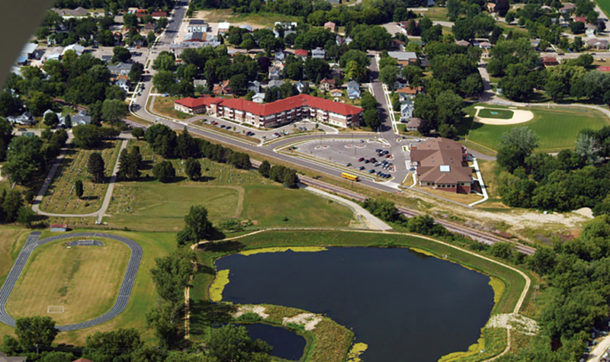Demystifying Brownfields for Communities

 By Matt Ashby, AICP CUD
By Matt Ashby, AICP CUD
Brownfield redevelopment is something many communities encounter, but few are ever prepared for. Working with the alphabet soup of acronyms from the Environmental Protection Agency (EPA) can be challenging at best, yet with a little patience, this program can help advance downtown redevelopment. In short, communities may be able to address problem properties on their Main Streets and beyond by securing a $300,000 EPA Brownfield Assessment Grant.
But first, it’s important to understand what a brownfield is. According to the Environmental Protection Agency, a brownfield site is property whose redevelopment may be complicated by potential environmental hazards, such as hazardous substances, pollutants, or contaminants of some sort. In other words, brownfields are community eyesores that need to be cleaned up. And that cleaning up then can lead to redevelopment, breathing new life into deteriorating areas. If done well, a brownfield redevelopment site attracts private developers who are smart enough to see a blossoming business opportunity. Our brownfield redevelopment practitioners are fond of saying that “a brownfield is a grain of sand from which the pearl of community develops.” And that leads to increased tax base for all.
 The EPA Brownfield Program can dovetail into what I’d like to call the traditional “Main Street Four-Point Approach.” This is an established approach from the National Main Street Center. It is a management strategy that has guided downtown development for several decades. Using this approach to consider how brownfield funds might be deployed to revitalize traditional downtown areas is a useful exercise to appreciating the power of the EPA grant program. While most people naturally think brownfield funding is only for sampling contaminants, other dynamic tools can help propel revitalization of buildings and districts. Using the Four-Point Approach, this powerful grant program can be deployed on Main Street for success.
The EPA Brownfield Program can dovetail into what I’d like to call the traditional “Main Street Four-Point Approach.” This is an established approach from the National Main Street Center. It is a management strategy that has guided downtown development for several decades. Using this approach to consider how brownfield funds might be deployed to revitalize traditional downtown areas is a useful exercise to appreciating the power of the EPA grant program. While most people naturally think brownfield funding is only for sampling contaminants, other dynamic tools can help propel revitalization of buildings and districts. Using the Four-Point Approach, this powerful grant program can be deployed on Main Street for success.
The first step is to translate brownfield grant lingo into Main Street Speak so folks have a better understanding of how to use these grants. Then communities follow these four points to springboard their program for success by bridging Main Street and brownfields:
- Design. Visualizing a future for derelict properties can be challenging. Exploring design options for new uses and enhancements can help communities see a new future. Using 3D visualizations and animations can bring this vision to life and motivate investment.
- Promotion. Communications regarding brownfields are essential, and communities using a brownfield grant must work to dispel property owners’ concerns about working with the EPA.
- Organization. A brownfield project can help bring the right people to the table to spark revitalization.
- Economic Vitality. A brownfield grant can help you explore the financial realities of your town and target potential users who might occupy redeveloped sites.
Ayres has a multitude of experience guiding communities through these steps for a successful brownfields and urban development strategy. We have examples from nearly a dozen Main Street communities on how this program can be applied locally. In short, with just a little creativity and resourcefulness, the EPA Brownfield Grant can be used to tackle some of their toughest workplan goals.
Matt Ashby is a certified urban designer who provides planning and redevelopment services nationwide.

Comments are closed.